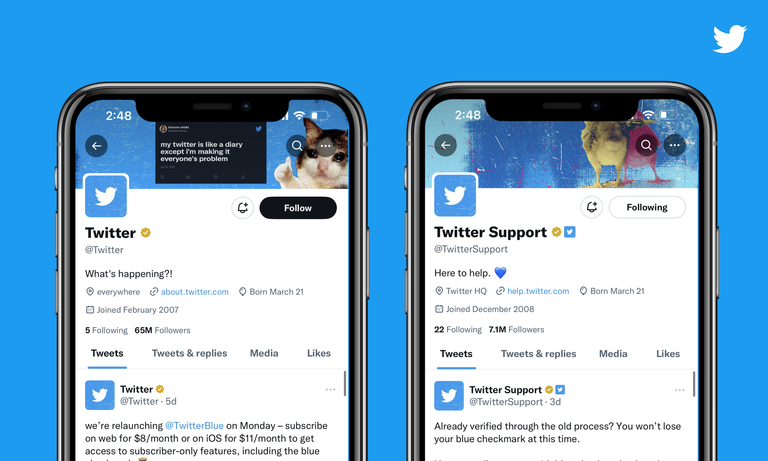All accounts that have not yet subscribed to Twitter Blue will shortly have their blue verification badges removed.
The social media business tweeted on Thursday, “On April 1st, we will start winding down our legacy verified programmed and deleting historical verified checkmarks.”
Following Elon Musk’s $44 billion acquisition of the firm in October 2022, Twitter revamped its verification process.
After some initial uncertainty regarding the platform’s approach to checkmarks, it decided to grant one to every Twitter Blue subscriber who satisfies specific qualifying standards.
Prior to the arrival of Musk, Twitter used to grant free blue verification badges to people it deemed to be prominent individuals or organizations, including celebrities, politicians, well-known businesses, and news organizations. The check, which is still displayed next to an account holder’s name, gave followers confidence in the account’s legitimacy and let them know it wasn’t a fake.
The corporation has been focusing more intently on ways to increase profitability since Musk’s takeover. In light of this, it made the decision to charge users for the badge by connecting it to a Twitter Blue membership. As a result, the badge serves as only a notification that an account has subscribed to Twitter’s premium service and satisfies certain criteria rather than as an authentication mark.
Prior to Musk, accounts that received a blue check were permitted to keep it regardless of whether they had signed up for Blue. But that’s about to change, as Twitter’s announcement on Thursday makes apparent. It means that a number of account holders, including journalists, athletes, and politicians, will lose their blue mark on April 1 or shortly thereafter if they don’t sign up for Twitter Blue.
Twitter’s premium tier can be purchased online for $8 per month (or $84 per year) or in-app on iOS and Android for $11 per month (or $115 per year).
Musk announced his intention to do away with legacy badges shortly after assuming control of Twitter, arguing that many of them were fake. He tweeted that legacy Blue would be eliminated in the upcoming months since there were “far too many corrupt legacy Blue’verification’ checkmarks” present.
It will be interesting to observe how Twitter’s decision to finally do away with the legacy checkmarks plays out. Since the once-verified user would no longer display any form of badge, if anyone with a legacy badge chooses not to sign up for Blue and loses their verification mark, it might give any fake accounts more credibility. Yet when it was connected to Twitter Blue at the time, the entire verification mechanism became virtually worthless for many in the Twitter community.

